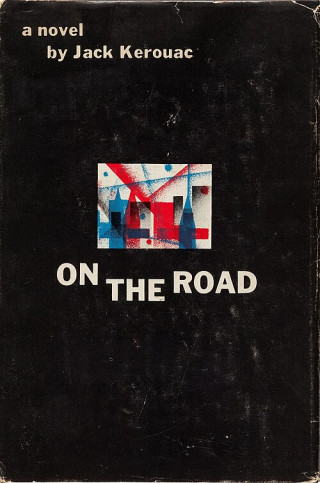Although On the Road was in no sense a protest novel, Jack had written something with tremendous subversive power. At a time when the United States was becoming blinded by its postwar success, he had looked past the American dream and projected a very different way of being in a voice that was extraordinarily compelling to those whose accumulated angst was at the point of boiling over. After the long wait that had been so costly for him, On the Road had come out at exactly the right moment.
“I need a drink,” Jack said, as we walked away from the newsstand. I couldn’t figure out why he still didn’t seem to share my excitement. He read the review a few times more as we sat in a bar on Columbus Avenue, but did not say what he was thinking. Not until sixty years later did I find a clue to what may have been on his mind as I read a page in one of his 1957 notebooks in the Berg Collection at the New York Public Library. The Jack Kerouac Archive had only recently become available for research there, after being withheld from scholars and a succession of frustrated biographers for four decades.
While he was alone in Mexico City, Jack had realized that he no longer believed in the Beat Generation. It was nine years since he’d first named it, in the midst of a conversation with his friend the young novelist John Clellon Holmes that had thrilled both of them. But now, he felt it no longer existed—not in the way he’d first thought of it, or with the people he used to call “furtives,” whose lives as “illegals” had inspired him in 1948. Most of them had soon “disappeared into jails or houses” rather than forming a subterranean spiritual movement that might spontaneously rise to the surface. Meanwhile, Holmes had run with his idea, and changed it —while giving Jack due credit—in an article titled “This Is the Beat Generation” that appeared in the Sunday Times Magazine in 1952.
Jack’s Beat Generation lived out on the margins of American society, where they had learned to “exist from the bottom of their minds outward.” They included drug addicts like the ones whom Jack had encountered on Forty-Second Street, outlaws like Neal Cassady, and Black people. He, too, felt like one of these furtives, with his unacceptable identity as a Franco-American, his poverty, and his low expectations for success. (In On the Road, Sal Paradise would chide himself for having “white ambitions.”)
Yet Jack’s original vision was wildly hopeful. With a “vanguard of fed-up Black beboppers,” he could imagine the Beat Generation’s forming a great procession that would lead the world “out from under the shadow of the atomic bomb” into a future of joy and “apocalyptic love,” as he explained in a letter to his skeptical acquaintance Alan Harrington in December 1948. (In the Berg Collection, I found the copy Jack had made for himself.)
